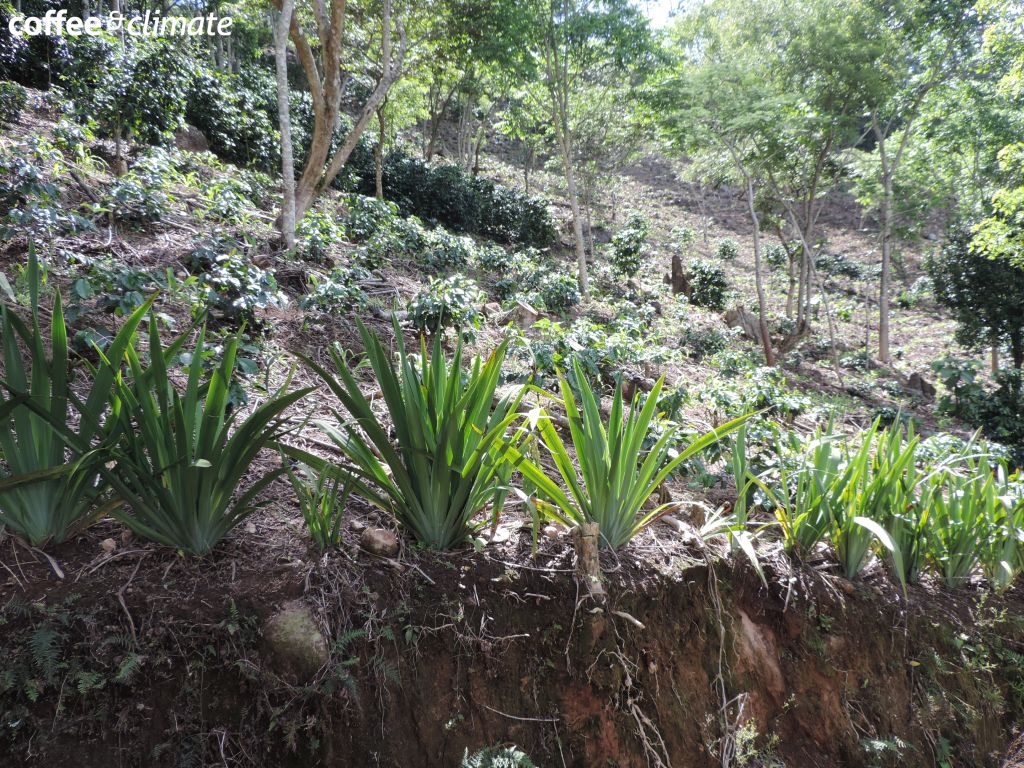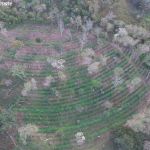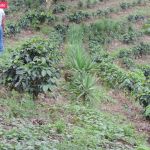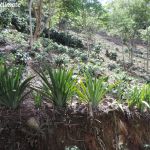Use of Barriers to Slow Water Run-off
Climate change increases the likelihood of very heavy downpours, which raises the risk that surges of flowing water will carry soil away with it. Creating barriers – with vegetation, earth or manmade ‘drop structures’ – in streams or on steep slopes can slow down water flow and both help to reduce erosion and improve infiltration.
Status: employed in some parts of Colombia.

Concept
There are various ways to slow the flow of runoff water caused by heavy rainfall. Two techniques are:
- Partial manmade barriers (‘drop structures’, ‘check dams’) placed in streams on steep slopes to reduce the average water velocity (think: manmade waterfalls, beavers!).
- Stone and/or vegetative barriers placed or planted across slopes to reduce flow velocity across open ground (think: retaining walls that turn the hillside into terraces).
- Swales: shallow, broad and vegetated channels designed to store and/or convey runoff and remove pollutants. They can be designed to promote infiltration where soil and groundwater conditions allow. (In some cases Brachiaria cover strips on sloping land tend to collect soil and organic matter and start to form swale-like structures).
- See Susdrain: Swales and conveyance channels.
- See The Transition from Swales to On Contour Hedges.
Ideally, these barriers would then channel the excess water into holding ponds or infiltration zones where the water can seep into ground to recharge ground water. If well executed, these relatively simple methods can be developed into a water management system that can address both problems of too much and too little water. If well executed, these relatively simple methods can be developed into a water management system that can address both problems of too much and too little water.
Drawbacks
- Can be expensive, depending on the design and materials. Labor costs for installation and maintenance of drop structures are an expensive solution to the problem of channel erosion but in unstable soils they may be the only solution. Because of high initial costs, expert guidance is highly recommended to reduce the likelihood of costly failures.
- Can’t stop extreme flooding.
Costs
- High labor costs for placing manmade drop structures or earth retaining walls.
- Lower costs for planting vegetative barriers.
Recommended Activities
- For streams:
- Place tree branches across the stream and firmly secure with vertical posts. This will create a partial dam.
- Line the area below the dam with rocks to create a stilling basin. Now the water will drop one to two meters into the basin below, reducing its velocity.
- Repeat periodically along the stream. A number of these drop structures will be needed along the length of the stream as it passes through or near the coffee plots.
- For hillsides with >30% slope:
- Create stone barriers. Where gullies in soil have already been formed by heavy downpours, further erosion can be slowed by lining them with stones, which will absorb the impact of falling water and reduce flow velocity.
- Plant vegetative barriers. Banks of vegetation such as vetiver or lemongrass across steep slopes will also tend to slow water flow and reduce erosion and likelihood of flooding. These will also work to increase infiltration and reduce runoff into streams.
Further Activities
- High feasibility.
- Applicable everywhere on land with >30% slope.
- Medium effectiveness – in cases of extreme rainfall all defenses can be overwhelmed.
- Have something to add to this tool description? Leave a comment!
- Interested in applying this tool? Look for pictures, case studies and info sheets below for step-by-step instructions to get you started.



That’s good to know that you could slow down erosion if you slow down the water. I would think that a wall would do a good job at that. I’ll have to consider getting someone to install a retention wall for me.
That’s good to know that the roots of plants can slow down the flow of water. I have a hill that is right behind my house that is pretty steep. I don’t want to have to worry about landslides or anything like that, so maybe I’ll have to get someone to help me set up some plant barriers to help keep the soil together.